#non-profit artist-run centre
Text

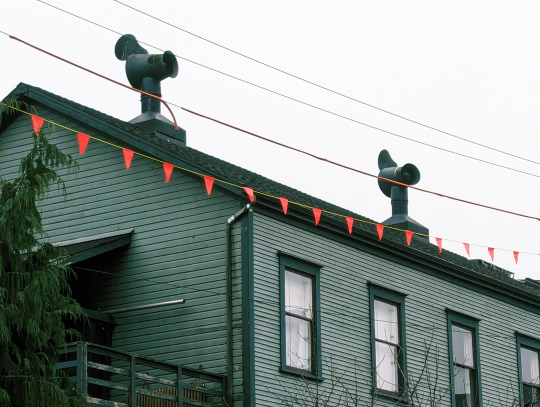
Western Front building
#western front#non-profit artist-run centre#mount pleasant#vancouver#local#photographers on tumblr#original phography
36 notes
·
View notes
Photo





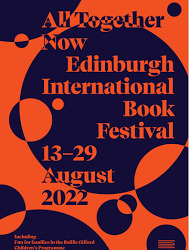

On 24th August 1947 the first Edinburgh International Festival (EIF) of Music and Drama opened.
Rudolf Bing, an Austrian impresario who had fled Nazi Germany, wanted to create an international festival in the UK. After various searches Edinburgh was proposed by Henry Harvey Wood of the British Council, supported by both Sir John Falconer, the city’s Lord Provost, and Lady Rosebery. In 1945 a festival committee was formed which decided that 1947 would be the earliest possible date - and that the Festival would be a chance for Edinburgh to create a new post-war identity as ‘the cultural resort of Europe’.
The first Edinburgh International Festival began on 24 August 1947, with an aim to ‘provide a platform for the flowering of the human spirit’ by bringing people and artists together from around the world. One of the highlights of the first year’s programme was the reuniting of conductor Bruno Walter with the Vienna Philharmonic and Walter’s comments set the seal on the future –
‘What you have done in Edinburgh is one of the most magnificent experiences since the war. Here human relations have been renewed.’
The “Festival” as it simply known in Edinburgh is now the world’s biggest arts festival, in over 300 venues, thousands of shows from around the world entertain people from, well around the world too, it is said the population of my hometown more than doubles at Festival time.
It’s not all comedy, and theatre, there are now many aspects to the festival, first you have the Edinburgh International Festival of Music and Drama, that’s the one that started on this day 73 years ago, it’s the professionals who get paid for being on stage in what ever guise they don, the thing was at the beginning it was invite only, and only eight companies were invited, so some set up their own shows, hoping to not just entertain, but hopefully earn a few quid in the process, this took the name The Fringe, it was been so successful it soon became bigger than the “Official” Festival and over the years most acts just wanted to be in Edinburgh, any chance of earning a crust went out the window, many performers save up all year just to come to Edinburgh and appear, sometimes in front of only a handful of people, if you’re lucky!
There was no real organisation during the first years of The Fringe, it wasn’t until 1951 when the sign of any communal activity occurred in 1951 when Edinburgh University students opened a drop-in centre at 25 Haddington Place. This was used by many Fringe performers as it provided cheap food and a bed for the night, oh to be able to find a cheap bed nowadays!
It was 1954 before Fringe groups held their first meeting to discuss the possibility of working together. “We are cutting each other’s throats” was a quote from one of the groups. It was the logistics, the non-performance aspects, that they saw as a problem and the establishment of a joint box office and publicity mechanism were given high priority. The first Fringe programme was produced in this year by C. J. Cousland, an Edinburgh printer, as seen in the second pic. The Fringe now outstrips the EIF by an insurmountable amount, but as I said earlier most shows struggle to make a profit.
Eventually, the Festival Fringe Society was set up in 1959. A constitution was drawn up, stating that elected officers should oversee the running of a box office, produce a programme brochure that would include every event that was not on the International Festival, and run a club where performers could meet, eat, drink until late, and generally feel involved.
This post is, like the Fringe, getting to large, I like to keep them short so having covered the main two, here is a quick run through of the rest of the Festival, as we know it now.
Pipes and dancing took place on the Castle Esplanade, and in Princes Street Gardens, from 1947, the year of the first International Festival. It was eventually superseded by The Edinburgh Military Tattoo in 1950. Under the direction of Brigadier Alasdair Maclean, there were eight items in the first programme. There were no stands in that first year, the audience watching from the side of the Esplanade. Stands were erected from the following year, growing to its current size when it houses an audience of around 9,000.
The Edinburgh Art Festival is a fixture in the International Festival programme, the early 1950s arguably being the golden period. However, funds were withdrawn in 1973 and the visual arts were relegated to “associates”, i.e. linked to but not directly part of the International Festival. In more recent years the associate tag gradually disappeared and it began to rely on The Fringe programme to provide external advertising of its wares.Most Edinburgh folk will remember the Ingenious Campbell soup cladding on the pillars of the Scottish Royal Academy for the Andy Warhol exhibition in 2007, it’s certainly my most memorable memory of the Arts Festival.
The Jazz & Blues Festival is a 10 day festival, spread over a dozen venues, which spans late July and early August. It began in August 1979 at the Adelphi Ballroom, Abbeyhill, which had a capacity of 500, and it was held over a single weekend. Like all the festivals it has grown over the years and for a short time they had “Jazz on a Summer’s Day” which attracted a bigger crowd than any other single jazz event in the UK, it was held in Princes Street Gardens, but the commercial folk that run things in Edinburgh basically fucked things up by allowing a Spiegeltent event to take over the space in the gardens in 2010 and that aspect of it has not returned since, which is a shame.
Edinburgh International Book Festival was first held in 1983 and was an instant success with 120 authors attending, including John Updike and Anthony Burgess. The 17 day festival is now sited in Charlotte Square Gardens, at the western end of George Street, converting it into a tented village for the duration. The 2016 festival, with an attendance of circa 230,000, boasted of appearances by over 800 authors, poets, illustrators, journalists and politicians from 55 countries.
The pics speak for themselves, except the last one, it’s me with a guy called Masai Graham, he is from Birmingham and throughout the year is a carer, but he is also a great fast paced comedian, and a master of the pun, He has been in the top ten jokes several times through the years, and this year won for the second time with the joke;
“I tried to steal spaghetti from the shop, but the female guard saw me and I couldn’t get pasta”
In 2016 his winning joke was;
“My dad suggested I register for a donor card – he’s a man after my own heart.”
In 2015 he came 4th with;
What’s the difference between a hippo and a Zippo? One is really heavy, the other is a little lighter.
You still have time to catch Masai in Dropkick Murphy’s on Merchant Street, check the programme here
https://www.freefestival.co.uk/venue.aspx?VenueID=188
#Scotland#scottish#the edinburgh international festival#edinburgh festival fringe#edinburgh book festival#edinburgh film festival
17 notes
·
View notes
Text
Disability Services Provider Ballina
Disability services providers Ballina help people with an intellectual, physical or sensory disability connect with their community. They offer residential villages, respite care, personalised support and community transport. In addition, they also provide services for children with disabilities. Frontline staff have a strong intuitive sense of what quality looks like in their daily work.
For some people, living in a residential village can provide an ideal lifestyle. These villages offer a variety of services including respite care and personalised support. They also offer a range of properties, from single rooms to larger apartments. Some villages even offer social and recreational activities. To find the right village for you, it is important to visit and talk to managers and staff. To know more about Disability Services Provider, visit the Dabba Mallangyirren website or call 0403856995.
Mind offers high-quality specialist disability accommodation (SDA) in a range of contemporary styles. The services are person-centred, family inclusive, and recovery focused. They help people with psychosocial disabilities achieve their goals and connect to the community.
SDA tenancy management services offer a range of personalised and flexible supports to meet the needs of people with disability. These services focus on fostering independence, enabling people to connect with the community and explore their artistic side. SDA tenancy management services are available across NSW. The company is also expanding into Victoria and Queensland.
Caring for a loved one with an illness or disability is a 24-hour job. It can be physically, emotionally and financially draining for caregivers, who need time to themselves. The good news is that there are respite care options. Caregivers can use these services to rest, travel, shop, or attend to other obligations. The respite can last a few hours, a day, several days or weeks.
Some services provide in-home respite, while others offer out-of-home respite. These services may include adult day care, senior centers, home health aides, assisted living communities, and family-type homes. Children with disabilities also can get planned or emergency overnight respite in programs located in Queens, Manhattan, and the Bronx.
The Ballina shire in Northern NSW is a popular destination for people with an intellectual disability, with plenty of opportunities to connect with the community. Some of the local service providers include CPL (Choice, Passion, Life), Daisi, and Aruma. These organisations offer residential villages, respite care, personalised support and community transport.
Disability services provider Ballina offers personalised support to people with intellectual, physical and sensory disabilities to connect with the community. These include residential villages, respite care and community transport. Frontline staff in disability services have a strong intuitive sense of what good service quality looks like and could benefit from more concrete, grounded quality standards. Located on Bundjalung Country, CPL - Choice, Passion, Life is the leading NDIS disability support provider in Northern NSW and can help you reach your full potential.
Community transport offers door-to-door, flexible public transport services for people who can’t use conventional bus services. Its importance is huge in combating isolation and enabling access to social, health, educational and employment opportunities that would otherwise be difficult to achieve.
Usually, local community transport schemes are run by voluntary, non-profit making organisations and they set their own fares. These fares are typically comparable to a bus fare and concessionary bus pass holders can receive a discount on certain journeys.
These community-led solutions are often the only way to meet unmet transport needs in many communities. They can range from volunteer car schemes organised by a local community group, to dial-a-ride and community bus services operating along fixed routes. Most are demand-responsive, taking passengers from door to door, but some offer scheduled services that follow a timetable like buses do. They can also include wheelchair accessible vehicles for some journeys. These services are the backbone of a vibrant community and help millions of people across the UK to stay connected and engaged in their communities. To know more about Disability Services Provider, visit the Dabba Mallangyirren website or call 0403856995.
#disability services provider ballina#disability services#disability services ballina#aboriginal lismore#disability lismore#ndis services#disability services lismore#disability services provider#ndis services ballina#ndis lismore#Disability services Casino#Disability services#Disability services Ballina#Disability services provider
0 notes
Text
The Sans Souci Learning Centre
The Sans Souci Learning Centre provides a high quality child care service that is a community based, non profit organisation, located on the grounds of the Sans Souci Public School and operates before school, after school and during school holidays. The centre is staffed by highly qualified and experienced child carers.The centre is run by a parent management committee and offers child care services for children from 5 to 13 years of age. Each class has a teacher with an Early Childhood Education Teaching Degree and is State Certified. The curriculum is a mixture of formal and informal activities. It is based on the belief that young children learn through play. The classroom has centres (such as House, Block and Art Center etc) that provide learning opportunities for social experiences, imaginative play and foster creativity. The students also have daily opportunity for gross motor play and gym activities.Renee Sans Souci is an Umonhon woman, educator and a practitioner of traditional healing. She is a Teaching Artist with the Lied Center for Performing Arts and has presented at numerous conferences on topics such as Native Science, History of Indian Education, Native languages, Poetry and Sustainability. She has worked with the Missing and Murdered Indigenous Women movement as well as the Water Protector movement in Minnesota.The Sans Souci is situated in west Ann Arbor near Washtenaw Community College and Eastern Michigan University. It is an ideal location for those with children as the community has a number of well-maintained parks close by and is served by Ann Arbor Public Schools.
At My Best Me, we believe early childhood years are the most vital in a person’s life as it sets the foundation for lifelong learning, behaviour, and wellbeing. Therefore, we are committed to providing quality early learning that helps us ensure each child’s best start to life and empower them to be the best versions of themselves.
#sans souci preschool#sans souci community preschool#sans souci learning centre#preschool sans souci
0 notes
Photo

Bora participar da campanha do Teatro Munganga!History of Teatro Munganga: Teatro Munganga is a non-profit organization that has existed for 35 years and is run by Carlos Lagoeiro and Cláudia Maoli. In the 1990s and 2000s, Theatre Company Munganga received governmental subsidies, which enabled it to produce 30 productions and present 100 performances for children and young people a year. It also created educational and social projects in schools, refugee centres, nursing homes for the elderly and psychiatric institutions. In 2013, after drastic cuts in Dutch governmental subsidies for culture, Carlos Lagoeiro and Claudia Maoli had to find another way to keep Munganga alive. They renovated the building on Schinkelhavenstraat and opened its doors in 2014 to a range of cultural activities. With this, the unique theatre was born: a multicultural venue with diverse programming, which has entered Amsterdam's cultural calendar as a welcoming space for a wide audience. Munganga also organizes projects for children and families, events related to current environmental issues, lectures and courses on a variety of topics, and concerts featuring both established and emerging artists. It was recently the subject of the documentary Munganga (2022), produced by Leiden University's research project: Night spaces: migration, culture and integration in Europe. For more information about Teatro Munganga, see www.munganga.nl LET'S KEEP MUNGANGA ALIVE! Your cooperation and support are crucial! Thank you all in advance! Carlos Lagoeiro and Claudia Maoli Teatro Munganga NL73 TRIO 0391 150448 (at Teatro Munganga) https://www.instagram.com/p/CqDH9s6DobT/?igshid=NGJjMDIxMWI=
0 notes
Photo

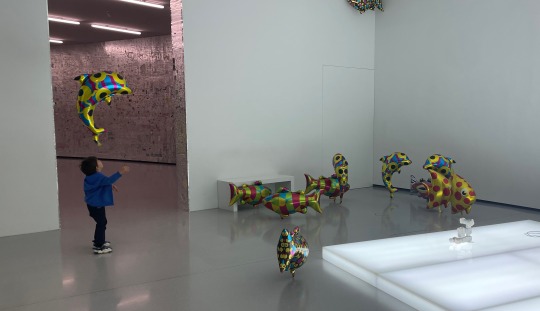


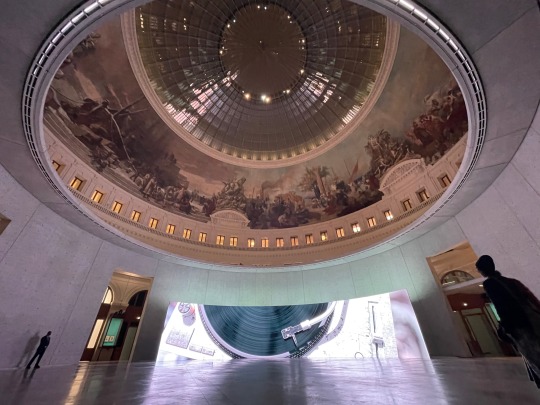

Paris Bourse de Commerce - Three Centuries: Three Roles
François Pinault seems like a decent billionaire. No great crime behind the great fortune. He ran his father’s wood trading company and started buying and fixing other related companies, then kept buying and fixing; retail, fine wine, luxury brands. He now owns Galeries Lafayette, Fnac, Chateau Latour, Christies, Yves Saint Laurent, Gucci and many others.
The boy from Brittany did well. His son now runs the businesses and Pinault Senior focuses on his billion dollar contemporary art collection. But billionaires don’t buy art to go on the dining room wall. Art collections on this scale are delivered to Free Trade Zones to avoid sales taxes, held in complex trusts, and exhibited and shared by a web of non-profit foundations. Pinault has a warehouse in Switzerland and already had two major museums in Venice before leasing the Bourse de Commerce in Paris.
This lovely cylindrical building was constructed in 1767 as a Wheat Exchange; the wheat from the plains around Paris was stored in the granary in the attic and the interior courtyard was used for haggling and trading. The beautifully elegant double helix stone stairs are still there that allowed porters going up to avoid the porters coming down. Labour was cheap.
A hundred years later, the place was too small to store the wheat for two million Parisians and the building was assigned to the commodities exchange - the Bourse de Commerce. The restored murals around the rotunda show their vision of France as a global trader on all points of the compass, and the entrance door is topped by statues showing the City of Paris flanked by Trade and Abundance. The whole thing exudes confidence and arrogance.
The building served that role for another hundred years until all the markets were replaced by the digital trading platform, Euronext, in1998. Not so confident and arrogant now.
In 2015, Paris then leased the building to Francois Pinault for another century to house part of his collection of contemporary art. The re-imagining of the space by Japanese architect Tadao Ando, a man the same age as Pinault, is truly spectacular with a massive new concrete circular gallery in the centre.
The entire history of the building has brought together the finest artists, architects, and engineers for over 200 years.
As for the art collection? The main floor was given over to projects by Anri Sala with a massive video installation in the core of the building that contrasts with the 19th century murals and metal and glass dome. The display of selected works from Pinault’s collection is far less interesting except for the animated mouse having an identity crisis by Ryan Gander.
0 notes
Text
Works created during Breaksea’s Seachange arts project to be publicly displayed on Saturday
Works created during Breaksea’s Seachange arts project to be publicly displayed on Saturday
The Albany Entertainment Centre will host a showcase of the Great Southern’s creative talent this weekend with a free display of the works created during Breaksea’s Seachange program.
Non-profit arts organisation Breaksea has run a series of creative arts projects from June through Seachange.
Local artists, performers and musicians held a program of workshops, allowing participants to learn from…

View On WordPress
0 notes
Text
Support a new First Nation, Métis, and Inuit Art Centre!
Daphne Art Centre is a non-profit Indigenous artist-run centre committed to serving the needs of emerging, mid-career, and established Indigenous visual artists through exhibitions and associated programming, workshops, residencies and curatorial initiatives.
Daphne will also be a gathering place for community members to come together for regularly scheduled events such as, art making and beading workshops, artist talks, film screenings and readings.
They will also be having feasts throughout the year to mark the changing of the seasons, Indigenous People’s Day, and for days of remembrance such as the Annual Women’s Memorial Walk.
$9,491 raised of $20,000 goal as of the 5th of November 2020!
#signal boost#important#indigenous#canada#mutual aid#direct action#support artists#art centre#community#first nations#inuit#Métis
827 notes
·
View notes
Photo

Skill without imagination is craftsmanship and gives us many useful objects such as wickerwork picnic baskets. Imagination without skill gives us modern art.
- Tom Stoppard, Artist Descending a Staircase
Sir Anish Kapoor’s ArcelorMittal Orbit tower was completed in 2012 at a cost of £19 million ($27 million). It was intended to be a permanent lasting legacy of London's hosting of the 2012 Summer Olympic and Paralympic Games, assisting in the post-Olympics regeneration of the Stratford area. At 376 feet (114.5 metres) it became the UK’s tallest public artwork.
London Mayor Boris Johnson put into motion a design competition that was held in 2009 and it called for designs for an "Olympic tower". A 9 panel commission made of the great and the good was set up to recommend to both Johnson and the government. It received about 50 submissions. Boris Johnson had said that his early concept for the project was something more modest than Orbit, along the lines of "a kind of 21st-century Trajan's Column", but this was dropped when more daring ideas were received. Boris Johnson was believed to want something like the Eiffel Tower or the Statue of Liberty what he and the government settled on was something completely different with Turner-Prize winning artist Sir Anish Kapoor in partnership with Cecil Balmond of Arup Group, an engineering firm.

Kapoor said that one of the influences on his design was the Tower of Babel, the sense of "building the impossible" that "has something mythic about it", and that the form "straddles Eiffel and Tatlin". Balmond, working on the metaphor of an orbit, envisaged an electron cloud moving, to create a structure that appears unstable, propping itself up, "never centred, never quite vertical". Both believe that Orbit represents a new way of thinking, "a radical new piece of structure and architecture and art" that uses non-linearity – the use of "instabilities as stabilities." The spaces inside the structure, in between the twisting steel, are "cathedral like", according to Balmond, while according to Kapoor, the intention is that visitors will engage with the piece as they wind "up and up and in on oneself" on the spiral walkway.
The Independent described Orbit as "a continuously looping lattice ... made up of eight strands winding into each other and combined by rings like a jagged knot". The Guardian describes it as a "giant lattice tripod sporting a counterweight collar around its neck designed to offset the weight of its head, a two-storey dining and viewing gallery". According to the BBC, the design incorporates the five Olympic rings.
Upon its launch Johnson said "It would have boggled the minds of the Romans. It would have boggled Gustave Eiffel." Nicholas Serota, a member of the design panel, said that Orbit was a tower with an interesting twist, with "the energy you might traditionally associate with this type of structure but in a surprisingly female form.”
When Anish Kapoor’s commission for the Olympic Park in London was unveiled no one really noticed, as most viewers thought it was still under construction.
Orbit confused viewers for sometime, but when they realised that the twisted metal structure in place was indeed an artwork they were up in arms. It was soon slammed by critics and citizens alike.

Overall reception to Orbit was mixed, but mostly negative. With regard to its potential as a lasting visitor attraction, The Guardian's Mark Brown reflected on the mixed fortunes of other large symbolic London visitor attractions such as the popular, but loss-making, Thames Tunnel; the Skylon structure, dismantled on the orders of Winston Churchill; and the successful London Eye. When plans were first reported for an Olympic tower, the media pointed to a manifesto pledge of Johnson's to crack down on tall buildings, in order to preserve London's "precious" skyline. The Times criticised the idea as a vanity project of Johnson's, with a design "matching his bravado", built to "seal his legacy", surmising it would be compared to other similar vanity projects such as the "wedding cake", the Monument to Vittorio Emanuele II built in Rome, or the Neutrality Arch, a rotating golden statue erected by Turkmenistan's President Saparmurat Niyazov, while comparing Johnson to Ozymandias. Art critic Brian Sewell said "Our country is littered with public art of absolutely no merit. We are entering a new period of fascist gigantism. These are monuments to egos and you couldn't find a more monumental ego than Boris."
The Times reported the description of it being the "Godzilla of public art". In October 2012, ArcelorMittal Orbit was nominated and made the Building Design magazine shortlist for the Carbuncle Cup - an award for the worst British building completed in the past year, which was ultimately awarded to the Cutty Sark renovation.
Jay Merrick of The Independent said that "[Orbit's] sculptural power lies in its ability to suggest an unfinished form in the process of becoming something else", describing how its artistic riskiness elevated it above the banal artworks of the public art movement that have been built elsewhere in Britain's towns and cities. Merrick was of the opinion that it would be either loved or hated, being a design which is "beautifully fractious, and not quite knowable".
Jonathan Glancey of The Guardian described Orbit as "Olympian in ambition" and a "fusion between striking art and daring engineering", and said that, the Aquatics Centre apart, it represented the architecturally striking Joker in the pack, given that the rest of the landscaping and architecture for the Games "promises little to get excited about". He believed it would become a "genuine eyecatcher" for the Olympics television coverage, with its extraordinary form being a "strange and enticing marriage of sorts" between the Eiffel Tower and the un-built early Soviet era Tatlin's Tower, with the biblical Tower of Babel as "best man".

The Times writer Tom Dyckhoff, while calling it "a gift to the tabloids" and a "giant Mr. Messy", questioned whether the Olympic site needed another pointless icon, postulating whether it would stand the test of time like the London Eye and become a true icon to match the Eiffel Tower, or a hopeless white elephant. Suggesting the project had echoes of Tatlin's Monument to the Third International, and especially Constant Nieuwenhuys' utopian city New Babylon, he asked whether Orbit was just as revolutionary or possessed the same ideological purpose, or whether it was merely "a giant advert for one of the world’s biggest multinationals, sweetened with a bit of fun".
Rowan Moore of The Guardian questioned if it was going to be anything more than a folly, or whether it would be as eloquent as the Statue of Liberty. He speculated that the project might mark the time when society stops using large iconic projects as a tool for lifting areas out of deprivation. He questioned its ability to draw people's attention to Stratford after the Games, in a similar manner to the successes of the Angel of the North or the Guggenheim Museum Bilbao. He also questioned the piece's ability to strike a chord like the Angel, which he believed had at least "created a feelgood factor and sense of pride" in Gateshead, or whether it would simply become one of the "many more unloved rotting wrecks that no one has the nerve to demolish". He postulated that the addition of stairs and a lift made Orbit less succinct than Kapoor's previous successful works, while ultimately he said "hard to see what the big idea is, beyond the idea of making something big".
Fellow Guardian writer John Graham-Cumming rejected comparisons to icons like the Eiffel Tower, which had itself not been intended to be a lasting monument, only persisting into public acceptance as art through being useful; he also pointed out the Colossus of Rhodes collapsed within a few decades, and the Tower of Babel was "constructed to glorify those that constructed it." He suggested that a future mayor should reconsider whether it should be pulled down. Questioning its corporate role, he believed that meant it looked less and less like a work of art and more like a vanity project.
Even Sir Anish Kapoor acknowledged the criticism and said of its clunky features,“It’s an object with all its elbows sticking out and it is slightly awkward, but I think I made it for that reason, I wanted it to be slightly awkward.”

After the 2012 Olympic Games, the Orbit tower was used as an observation tower, running at a loss of £520,000 ($884,000) in 2014–15, according to the BBC—or losing up to £10,000 ($17,000) a week in 2014, according to the Guardian newspaper.
Amidst the rising clamour of the costs matched only by the disdainful disinterest in the massive sculpture, something had to be done.
To appease Londoners, ex-London Mayor Boris Johnson brought in Carsten Höller to add a slide to the 376 feet tall artwork, making it the highest slide in Europe.
Kapoor later said he was pushed into the high profile collaboration by Johnson. Kapoor would later say that Johnson’s request “felt to me as if it was turning the whole thing in the wrong direction.”
“It was not always my thinking. The mayor foisted this on the project and there was a moment where I had to make a decision - do I go to battle with the mayor or is there a more elegant or astute way through this?,” he told the Guardian.
“I knew of Carsten’s work so I thought, well, who better than a fellow artist to join up with and make this a positive story rather than a negative… Luckily, and thankfully, Carsten was open to it, so we found a way round this,” Kapoor explained.
Judging by the unforgettable success of Höller’s slide installation at Tate Modern’s Turbine Hall, it’s easy to imagine what made Kapoor click and extend the invitation to the Belgian-born Stockholm-based artist.
“One makes artworks for other reasons than profit,” Kapoor told the Guardian. “I understand this is run as a so-called attraction, which I have problems with personally… I want it to be slightly more highbrow than that, without wanting to be pompous about it. There’s a difference between a fairground ride and art,” he added.

Höller, meanwhile, took a more lighthearted approach, urging people to embrace “the amusement side of it.”
“A child might be here purely for the slide, while the serious art lover might see this in purely formalistic terms. I personally like the confusion, that you don’t know what it is but it still creates a very unique experience,” he told the Guardian.
The ArcelorMittal Orbit re-opened to the public on 5 April 2014. Since then it has done below average business in attracting people to come and visit it or try the slide.
The London Legacy Development Corporation (LLDC), which runs the park where the sculpture is located, released numbers revealing the sculpture’s sizeable debt and a steep drop in visitors. Steel magnate Lakshmi Mittal had provided a £9.2 million ($11.2 million) loan to help pay for the original construction of the sculpture, but this loan has ballooned to £13 million due to the accrual of interest.
Ticket sales to the observation platform and a tunnel slide designed by Carsten Höller were meant to help repay the loan, but low visitor attendance prompted a £58,000 ($70,000) loss in 2018/19 alone. Visitor numbers have dropped from a high of 193,000 in 2016/17, when Höller’s slide was introduced, to 155,000 in 2018/19.
It’s not just an artistic folly but a commercial one too.
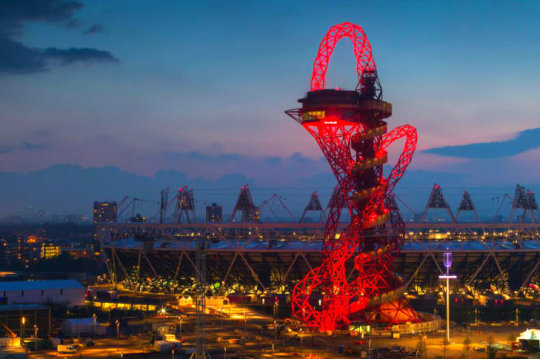
It's not wholly fanciful that such artistic scuptural landmarks can help lift places. No one can put a figure on jobs created or investments made in Gateshead thanks to the Angel of the North, but it has at least created a feelgood factor and sense of pride. The Bilbao Guggenheim of 1996, still the archetype of such town-boosting, certainly placed a relatively obscure city at the centre of attention.
Buildings can't do it alone and if people find their attention has been drawn only to a wasteland, they will go away again. The Guggenheim worked because there were also dull practical things in Bilbao such as new transport infrastructure and business parks.
But the most important ingredient of a successful icon is that it works artistically. It has to strike a chord, sound the right note, catch a mood, win hearts and confound sceptics. In other words it has to be aesthetically pleasing because it’s good art made by equally by great craft and graft.
The ArcelorMittal Orbit has become an unloved rotting wreck that no one has the nerve to demolish.
#orbit#stoppard#quote#britain#art#sculpture#modern art#olympics#society#culture#aesthetics#anish kapoor#carsten holler
39 notes
·
View notes
Text

WAM Clothing, the non-Indigenous company at the centre of the dispute over rights to license the Aboriginal flag for commercial gain, will appear before a Senate committee on Monday [14 September 2020] as it looks into the deal and explores options to “free the flag” design for community use.
WAM Clothing was granted the exclusive use of the Aboriginal flag on clothing, physical and digital media by its designer and copyright holder, the Luritja artist Harold Thomas, in November 2018.
The company has since issued infringement notices to the AFL and NRL, as well as non-profit Aboriginal organisations, for their past use of the design.
WAM Clothing is part owned by Ben Wooster, whose previous company, Birubi Art, was fined a record $2.3m by the federal court after it found that it had breached consumer law by selling fake Aboriginal art.
In October 2018, the court found that Birubi had “made false or misleading representations that products it sold were made in Australia and hand-painted by Australian Aboriginal persons, in breach of the Australian consumer law”.
The Australian Competition and Consumer Commission sought a high penalty as a deterrent, and to signify the “serious cultural harm” done by fake Aboriginal art.
Birubi went into voluntary liquidation in 2017 but not before selling its assets to another company, Gifts Mate, “established and controlled by Birubi’s former director Mr [Ben] Wooster”, the federal court judge Melissa Parry noted in her decision. [...]
Spark Health, an Aboriginal-owned and run social enterprise that makes merchandise with the tagline Clothing the Gap, was among the groups served with a cease and desist notice in 2018. Its managing director, Laura Thompson, said at the time that they were angry “a white business has got full licensing agreement and it’s a white business that’s profiting off it”. As a result she began the campaign to #FreeTheFlag.
Wooster’s evidence will be the first time a representative from WAM Clothing has spoken publicly at any length about its arrangements with Thomas. Wooster is also appearing on behalf of Gifts Mate. [...]
The committee, chaired by NT Labor senator and Yanyuwa woman Malarndirri McCarthy, will consider the current and former copyright and licensing arrangements, who benefits from payments for its use, and the effect of those arrangements on Aboriginal organisations and communities.
---
Lorena Allam. “Company that owns rights to Aboriginal flag in the spotlight at Senate inquiry.” The Guardian. 13 September 2020.
36 notes
·
View notes
Photo


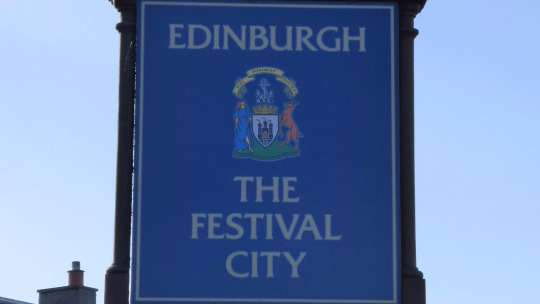
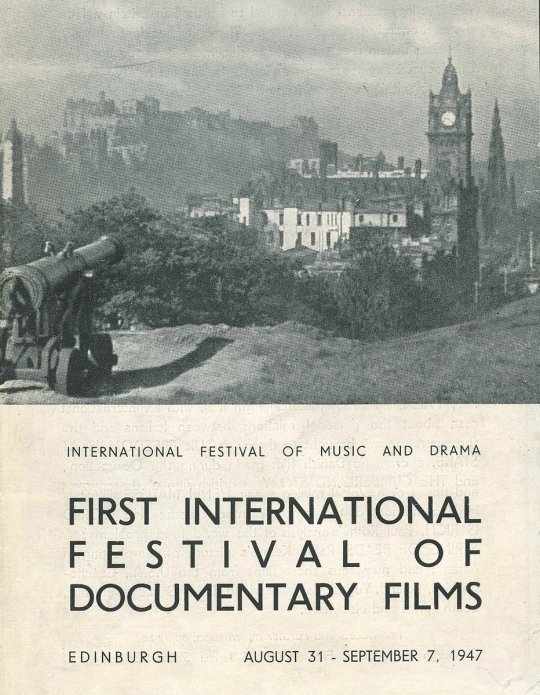



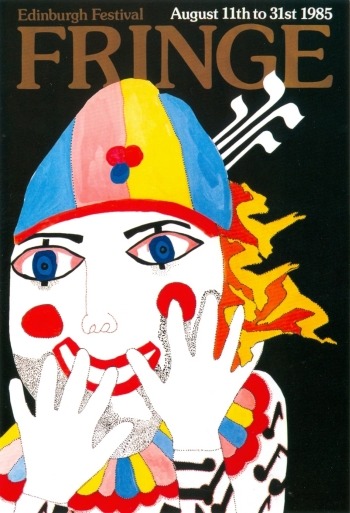
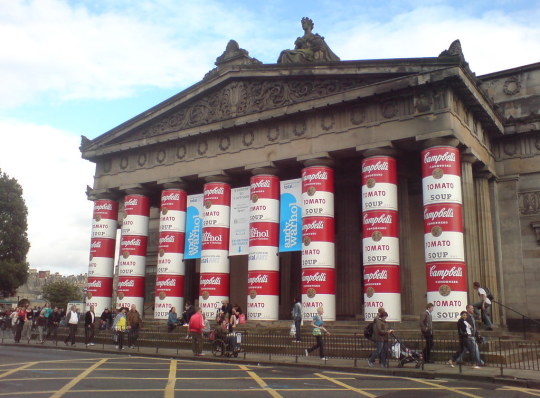
On 24th August 1947 the first Edinburgh International Festival (EIF) of Music and Drama opened.
Rudolf Bing, an Austrian impresario who had fled Nazi Germany, wanted to create an international festival in the UK. After various searches Edinburgh was proposed by Henry Harvey Wood of the British Council, supported by both Sir John Falconer, the city’s Lord Provost, and Lady Rosebery. In 1945 a festival committee was formed which decided that 1947 would be the earliest possible date - and that the Festival would be a chance for Edinburgh to create a new post-war identity as ‘the cultural resort of Europe’.
The first Edinburgh International Festival began on 24 August 1947, with an aim to ‘provide a platform for the flowering of the human spirit’ by bringing people and artists together from around the world. One of the highlights of the first year’s programme was the reuniting of conductor Bruno Walter with the Vienna Philharmonic and Walter’s comments set the seal on the future –
‘What you have done in Edinburgh is one of the most magnificent experiences since the war. Here human relations have been renewed.’
The “Festival” as it simply known in Edinburgh is now the world’s biggest arts festival, in over 300 venues, thousands of shows from around the world entertain people from, well around the world too, it is said the population of my hometown more than doubles at Festival time.
It’s not all comedy, and theatre, there are now many aspects to the festival, first you have the Edinburgh International Festival of Music and Drama, that’s the one that started on this day 73 years ago, it’s the professionals who get paid for being on stage in what ever guise they don, the thing was at the beginning it was invite only, and only eight companies were invited, so some set up their own shows, hoping to not just entertain, but hopefully earn a few quid in the process, this took the name The Fringe, it was been so successful it soon became bigger than the “Official” Festival and over the years most acts just wanted to be in Edinburgh, any chance of earning a crust went out the window, many performers save up all year just to come to Edinburgh and appear, sometimes in front of only a handful of people, if you’re lucky!
There was no real organisation during the first years of The Fringe, it wasn’t until 1951 when the sign of any communal activity occurred in 1951 when Edinburgh University students opened a drop-in centre at 25 Haddington Place. This was used by many Fringe performers as it provided cheap food and a bed for the night, oh to be able to find a cheap bed nowadays!
It was 1954 before Fringe groups held their first meeting to discuss the possibility of working together. “We are cutting each other’s throats” was a quote from one of the groups. It was the logistics, the non-performance aspects, that they saw as a problem and the establishment of a joint box office and publicity mechanism were given high priority. The first Fringe programme was produced in this year by C. J. Cousland, an Edinburgh printer, as seen in the second pic. The Fringe now outstrips the EIF by an insurmountable amount, but as I said earlier most shows struggle to make a profit.
Eventually, the Festival Fringe Society was set up in 1959. A constitution was drawn up, stating that elected officers should oversee the running of a box office, produce a programme brochure that would include every event that was not on the International Festival, and run a club where performers could meet, eat, drink until late, and generally feel involved.
This post is, like the Fringe, getting to large, I like to keep them short so having covered the main two, here is a quick run through of the rest of the Festival, as we know it now.
Pipes and dancing took place on the Castle Esplanade, and in Princes Street Gardens, from 1947, the year of the first International Festival. It was eventually superseded by The Edinburgh Military Tattoo in 1950. Under the direction of Brigadier Alasdair Maclean, there were eight items in the first programme. There were no stands in that first year, the audience watching from the side of the Esplanade. Stands were erected from the following year, growing to its current size when it houses an audience of around 9,000.
The Edinburgh Art Festival is a fixture in the International Festival programme, the early 1950s arguably being the golden period. However, funds were withdrawn in 1973 and the visual arts were relegated to “associates”, i.e. linked to but not directly part of the International Festival. In more recent years the associate tag gradually disappeared and it began to rely on The Fringe programme to provide external advertising of its wares. Most Edinburgh folk will remember the Ingenious Campbell soup cladding on the pillars of the Scottish Royal Academy for the Andy Warhol exhibition in 2007, it’s certainly my most memorable memory of the Arts Festival.
The Jazz & Blues Festival is a 10 day festival, spread over a dozen venues, which spans late July and early August. It began in August 1979 at the Adelphi Ballroom, Abbeyhill, which had a capacity of 500, and it was held over a single weekend. Like all the festivals it has grown over the years and for a short time they had “Jazz on a Summer’s Day” which attracted a bigger crowd than any other single jazz event in the UK, it was held in Princes Street Gardens, but the commercial folk that run things in Edinburgh basically fucked things up by allowing a Spiegeltent event to take over the space in the gardens in 2010 and that aspect of it has not returned since, which is a shame.
Edinburgh International Book Festival was first held in 1983 and was an instant success with 120 authors attending, including John Updike and Anthony Burgess. The 17 day festival is now sited in Charlotte Square Gardens, at the western end of George Street, converting it into a tented village for the duration. The 2016 festival, with an attendance of circa 230,000, boasted of appearances by over 800 authors, poets, illustrators, journalists and politicians from 55 countries.
So there you have it, small beginnings from the ashes of world war two, I thought that things would be back to normal this year, after last years cancellation, but it is a curtailed Festival this year, I only managed to get across once, the place isn’t the same without the full thing, hopefully next year we will all get back to a more normal, normal.
36 notes
·
View notes
Text
Disability Services Provider Ballina
Disability services providers Ballina help people with an intellectual, physical or sensory disability connect with their community. They offer residential villages, respite care, personalised support and community transport. In addition, they also provide services for children with disabilities. Frontline staff have a strong intuitive sense of what quality looks like in their daily work.
For some people, living in a residential village can provide an ideal lifestyle. These villages offer a variety of services including respite care and personalised support. They also offer a range of properties, from single rooms to larger apartments. Some villages even offer social and recreational activities. To find the right village for you, it is important to visit and talk to managers and staff. To know more about Disability Services Provider, visit the Dabba Mallangyirren website or call 0403856995.
Mind offers high-quality specialist disability accommodation (SDA) in a range of contemporary styles. The services are person-centred, family inclusive, and recovery focused. They help people with psychosocial disabilities achieve their goals and connect to the community.
SDA tenancy management services offer a range of personalised and flexible supports to meet the needs of people with disability. These services focus on fostering independence, enabling people to connect with the community and explore their artistic side. SDA tenancy management services are available across NSW. The company is also expanding into Victoria and Queensland.
Caring for a loved one with an illness or disability is a 24-hour job. It can be physically, emotionally and financially draining for caregivers, who need time to themselves. The good news is that there are respite care options. Caregivers can use these services to rest, travel, shop, or attend to other obligations. The respite can last a few hours, a day, several days or weeks.
Some services provide in-home respite, while others offer out-of-home respite. These services may include adult day care, senior centers, home health aides, assisted living communities, and family-type homes. Children with disabilities also can get planned or emergency overnight respite in programs located in Queens, Manhattan, and the Bronx.
The Ballina shire in Northern NSW is a popular destination for people with an intellectual disability, with plenty of opportunities to connect with the community. Some of the local service providers include CPL (Choice, Passion, Life), Daisi, and Aruma. These organisations offer residential villages, respite care, personalised support and community transport.
Disability services provider Ballina offers personalised support to people with intellectual, physical and sensory disabilities to connect with the community. These include residential villages, respite care and community transport. Frontline staff in disability services have a strong intuitive sense of what good service quality looks like and could benefit from more concrete, grounded quality standards. Located on Bundjalung Country, CPL - Choice, Passion, Life is the leading NDIS disability support provider in Northern NSW and can help you reach your full potential.
Community transport offers door-to-door, flexible public transport services for people who can’t use conventional bus services. Its importance is huge in combating isolation and enabling access to social, health, educational and employment opportunities that would otherwise be difficult to achieve.
Usually, local community transport schemes are run by voluntary, non-profit making organisations and they set their own fares. These fares are typically comparable to a bus fare and concessionary bus pass holders can receive a discount on certain journeys.
These community-led solutions are often the only way to meet unmet transport needs in many communities. They can range from volunteer car schemes organised by a local community group, to dial-a-ride and community bus services operating along fixed routes. Most are demand-responsive, taking passengers from door to door, but some offer scheduled services that follow a timetable like buses do. They can also include wheelchair accessible vehicles for some journeys. These services are the backbone of a vibrant community and help millions of people across the UK to stay connected and engaged in their communities. To know more about Disability Services Provider, visit the Dabba Mallangyirren website or call 0403856995.
#disability services provider ballina#disability services#disability services ballina#disability services lismore#aboriginal lismore#disability services provider#disability lismore#ndis services#ndis lismore#ndis services ballina#Disability services Casino#Disability services#Disability services Ballina#Disability services provider
0 notes
Text
NY / After Our Bodies Meet

Cyriaco Lopes, Sunset (documentation of a performance), 1997, Inkjet Print, 4” x 6″
After Our Bodies Meet
January 9 – February 14, 2021
The gallery will be open every Sat & Sun from 3 – 6pm and by appointment
Tiger Strikes Asteroid New York is pleased to present After Our Bodies Meet, a group exhibition curated by Daniel Johnson, featuring works by Margrethe Aanestad, Daniel Arturo Almeida, Dalia Amara, Cyriaco Lopes, and Randy West.
In the novel Tar Baby, Toni Morrison wrote, “At some point in life the world's beauty becomes enough. You don't need to photograph, paint or even remember it. It is enough.” Exploring themes of love and memory, the artists in this show have created works that grapple with how we relate to each other and ultimately posit the question: What is enough? Whether through the investigation of familial bonds as with Almeida and Amara’s work, romantic love in West’s series, or the nature of being in the work of Aanestad and Lopes, the works in this show evoke an ethos of delicateness and a celebration of impermanence.
Margrethe Aanestad
is a Norwegian-born artist (1974), living and working in Brooklyn, NY and Stavanger, Norway. Aanestad studied fine arts at the Rogaland Art College and graduated with a BA from the University of Stavanger in Culture&Art Management (2000). She works in drawing, painting and sculpture, and has exhibited internationally at galleries including Open Source Gallery, NY; Torrance Shipman, NY; Dimensions Variable, Miami; Interface gallery, CA; Kunsthall Stavanger (Norway), Abingdon Studios, England. Since 2001 she has worked independently to initiate, produce, and curate projects at the art scene in Stavanger, where she also co-founded and co-directed the artist-run, non-profit, space Prosjektrom Normanns (2011- 2020). She is one of the co-founders and co-owner of the creative studio/working space ELEFANT (est 2013-). Aanestad serves on the advisory board of Kunsthall Stavanger and Open Source Gallery (NYC). Currently she is working on a commission for NYU/Clive Davis Institute, and will soon enter a 3 month-residency at Residency Unlimited, NY.
Daniel Arturo Almeida
(b. 1992. Caracas, Venezuela) is a cultural producer and artist working through photography, installation, archiving, journalism, and public engagement. His practice chronicles intimate and collective stories that shape belief systems and hierarchies of power in the Americas. The product of generational migrations, Almeida researches images, music, anecdotes, and documents portraying national pride, nostalgia, and collective amnesia. The work observes shared culture through loss, decadence, hope, and empathy. He has exhibited in The U.S.A in various institutions, galleries, and festivals, including La Salita Project, Columbia Teachers College, Project for Empty Space, Satellite Art Show, Doral Contemporary Art Museum, and the SVA Chelsea Galleries, among others. Almeida holds an MFA in Fine Arts from the School of Visual Arts (2020) and a BFA in Painting and Installation from Florida International University (2017). He currently lives and works in Queens, NY.
Dalia Amara is an American-Jordanian multidisciplinary artist in New York working in photography, video, performance, and sculpture. Amara was raised in the US, Jordan, Egypt, Qatar, and UAE. She received her MFA from the School of Visual Arts in New York, and her BFA from Columbia College Chicago. Amara has lectured, screened, and exhibited in New York, Toronto, and online at White Columns, Gallery 44, and Selena Gallery. Her work has been reviewed in The New Yorker, Artnet News, and The Art Newspaper.
Cyriaco Lopes is a New York-based Brazilian artist has exhibited at the Museum of Modern Art in Rio de Janeiro, the Museum of Art of São Paulo (MASP), El Museo del Barrio in NYC, the Centre Wallonie Bruxelles in Paris, Casa Degli Artisti in Milan. His work has been curated by artists such as Lygia Pape, Janine Antoni, and Luciano Fabro. He is the winner of the NYC World Studio Foundation Award, the Contemporary Art Museum Saint Louis Project Award, the São Paulo Phillips Prize of trip to Europe. He received grants to attend the London Project residency and Skowhegan. Lopes is an associate professor of art at John Jay College / the City University of New York. He also teaches in the Stetson University low residency M.F.A. of the Americas in Poetry in the Expanded Field.
Randy West (born 1960 in Indianapolis, Indiana) is an American fine art photographer, perhaps best known for his distinctive and avant-garde scanner use of the photographic medium, as seen across several series of his work. West is also on the faculty of the School of Visual Arts, and a director of the school's Master of Fine Arts program for photography, video, and related media. West has been represented by the Bruce Silverstein Gallery in New York and the Craig Krull Gallery in Los Angeles. He has had solo exhibitions at Jan Kesner Gallery, Yancey Richardson Gallery, Stephen Wirtz Gallery, the Houston Center for Photography, and as part of the Here Theater Project. His work has also appeared in group exhibitions, including exhibitions with the Massachusetts Museum of Contemporary Art, the International Center for Photography, the San Diego Contemporary Art Museum, the Center for Creative Photography in Tucson, and the Marlborough Gallery.
Daniel AnTon Johnson is an artist with a diverse practice based in photography, language, film, and video. His work examines how technology shapes notions of identity within popular culture and contemporary visual media. Focusing on authorship and representation, Johnson’s practice explores cultural and visual literacies and how they form worldviews. Johnson has taught and lectured at School of Visual Arts, Adelphi University, Rutgers University-Newark, and Columbia University, and mentored teens at ICP and The Harlem School of the Arts. Johnson holds an MFA in Photography, Video and Related Media from the School of Visual Arts, and an MA in English from Washington College. He currently resides in Brooklyn.
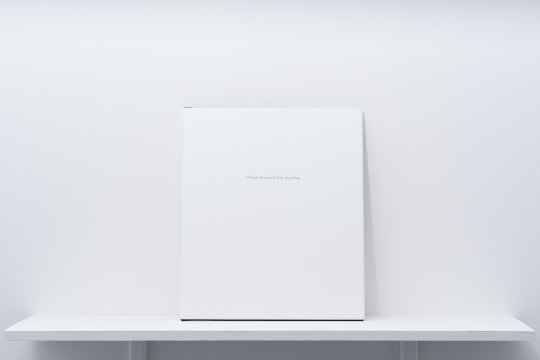
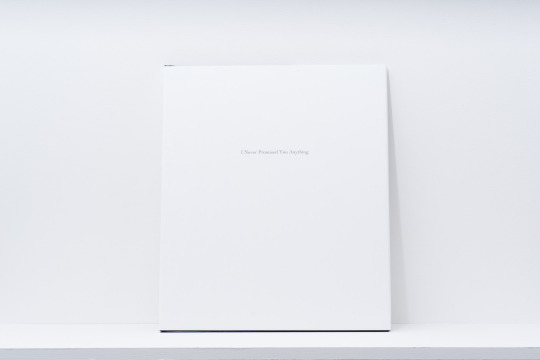
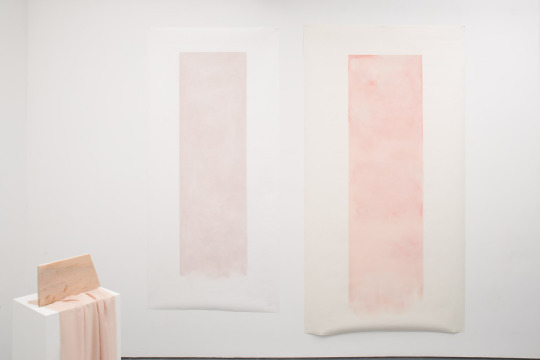
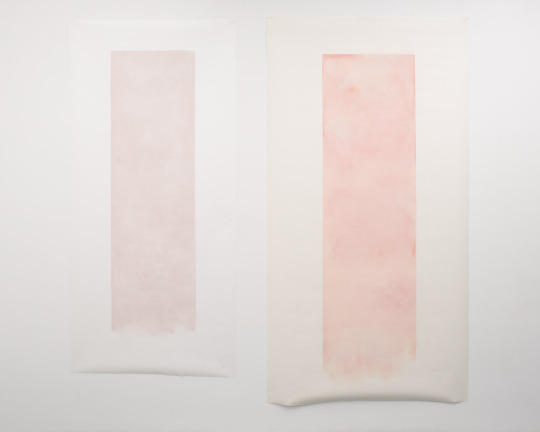
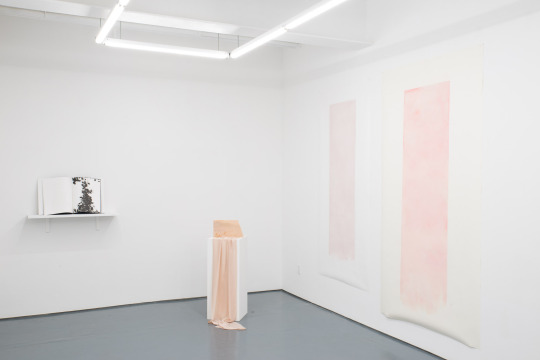
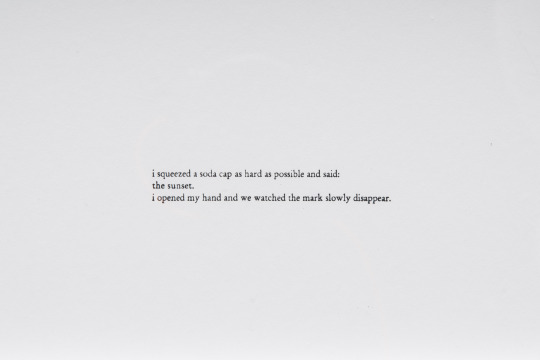
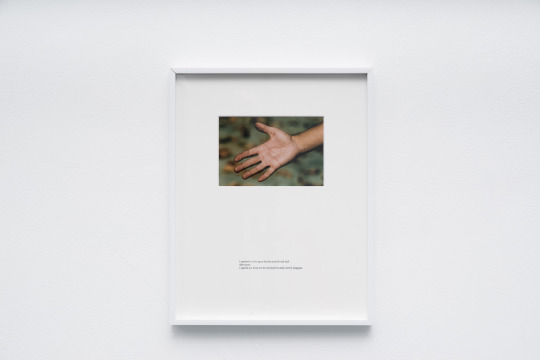


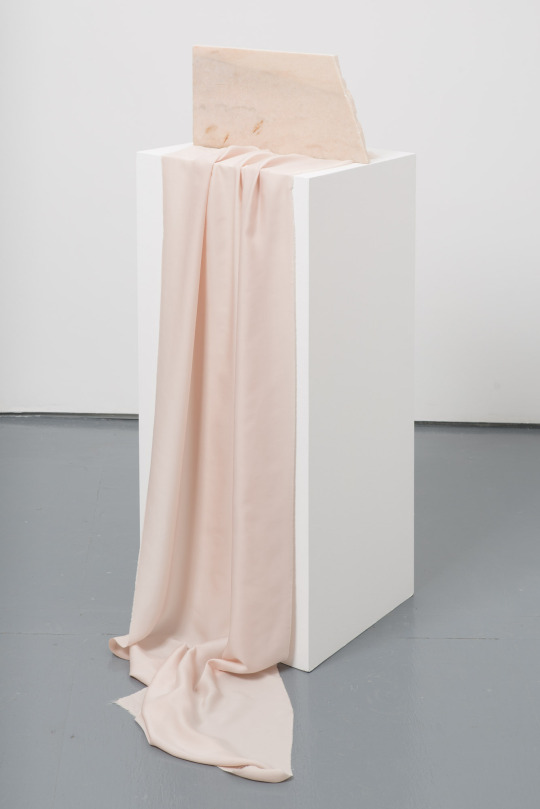
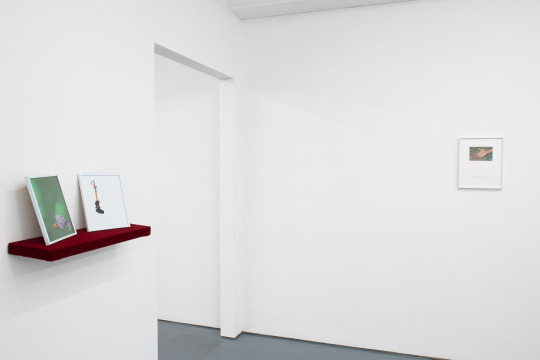



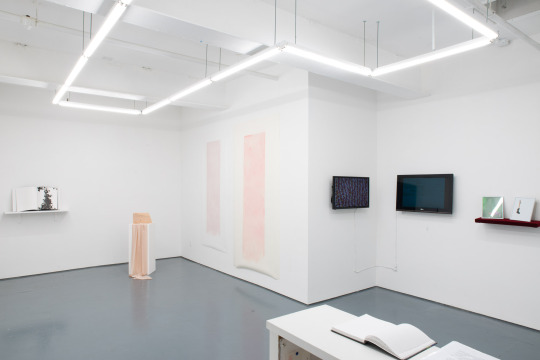
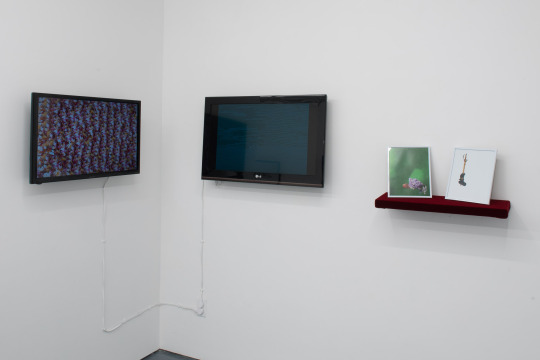
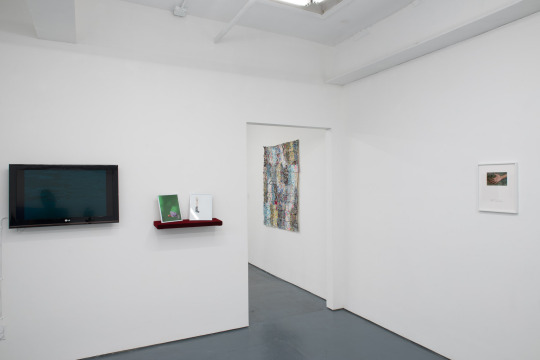









photos by Daniel Johnson
3 notes
·
View notes
Link
Hello, dearest clients!
Wow, COVID-19 has REALLY thrown us for a loop this year. We've got commercial rent to pay, we're occasionally shut down by the province, and when we are allowed to be open, we're fitting clients in between extensive disinfection routines and trying to protect ourselves and our own physical/mental health challenges.
These limitations mean that we cannot work much harder, and I think we are already working smarter. Raising prices would price out a large portion of our marginalized LGBTQ2SIA+ clients, defeating the purpose of our inclusive, trans-centred community space.
Because of the circumstances of 2020, we are humbly requesting help! We understand that many folks are scrambling for cash right now - we are not at risk of an immediate shutdown, but our future is precarious. If you can safely afford to throw a monthly donation our way, big or small, it would really help us maintain our presence in the city.
Do you want some form of digital content in exchange? Newsletter updates? Trans Q&A videos? Let us know! We're trying to get creative.
--
If you've never heard of Big Bro's Barbershop, here's our intro blurb!
On September 1, 2015, Jessie Anderson opened Big Bro’s Barbershop for business on a budget of roughly nine thousand dollars, all crowdfunded from community members. In exchange, he had promised a brick-and-mortar space dedicated to the wellness of the trans community, created by a member of the trans community. Big Bro’s Barbershop would be a place where trans people could receive hair services without hassle, purchase gender-affirming products that are rarely available on store shelves, and have access to resources that are often difficult to find or afford.
For the first eight months that the business was open, Big Bro’s was located in a 300ft² windowless art studio in an industrial Franklin Street warehouse. Clients would ring a doorbell on a discreet sign hung on the front gate, and Anderson would run downstairs to escort his guests up to the shop. However, this original location was surprisingly well-received – queer folks in Vancouver were hardly strangers to community events and resources being hosted in odd affordable corners of Canada’s most expensive city.
Rapid-fire press coverage declaring Big Bro’s Barbershop the first business of its kind generated enough hype for Anderson to win Best Emerging Entrepreneur at the 2016 Small Business BC Awards, as one of only ten SBBC Awards winners selected from 535 province-wide nominations. This momentum carried Big Bro’s into its current location, an 800ft² storefront on Nanaimo Street, shared with independent queer hairdresser Zed Payne.
Since first opening its doors, Big Bro’s Barbershop has hosted a number of projects, fundraisers, and independent contractors, including:
- two trans (and trans-friendly) tattooists (who later became owners of their own tattoo studio, Sticks & Stones)
- several trans (and trans-friendly) service providers, including two makeup artists, a body piercer, and a tailor-slash-bootblack
- a monthly-rotated gallery of work from local visual artists
- an afternoon of beautification services for a group of current and former sex workers, via PACE
- trans health surveys
- fundraising sales for by-trans-for-trans projects, including locally-produced sitcom The Switch
- financial contributions to the Trans March, Black Lives Matter, the Compassion Club, local schools and events, crowdfunding campaigns for cancer patients, and more
- community consultations with Vancouver-based medical providers and non-profits
- a free, recurring clothing swap for community members
- double-discounted haircuts for folks on welfare and/or disability
- free access to harm reduction supplies (safer sex supplies, menstrual pads, hormone injection supplies, safer drug use supplies)
Big Bro’s Barbershop continues to serve its community as one of the few physical spaces dedicated to enhancing the lives of Vancouver’s trans community beyond the context of medical transition.
4 notes
·
View notes
Text
70 strategies that white people in the UK can adopt to fight racial injustice

“Washing one’s hands off the conflict between the powerful and the powerless means to side with the powerful, not to be neutral.” — Paulo Freire
“The most common way people give up their power is by thinking they don’t have any.” — Alice Walker
To help to turn ideas of equality, justice and safety for all into practice, I’ve listed 70 strategies that white people can adopt in their lives to take a stance. Anti-racism is a verb. "I'm not a racist" disclaimer has never saved lives or contributed to greater equality in the workplace. We need direct action, online & offline. We need continuous efforts.
Fight for racial justice is an international and intersectional struggle. The strategies can be adapted or linked to others, which are more appropriate for different contexts.
**Note that this article is continually updated on agatapacho.wordpress.com
Action against police brutality & violence against immigrants
1. Follow and support The United Families & Friends Campaign (UFFC), a coalition of those affected by deaths in police, prison and psychiatric custody, supports others in similar situations. Participate in marches and demonstrations they organise, donate, spread the word.
2. Go to protests and demonstrations. When faced with the police, go to the front - you are less likely to be arrested and more likely to be treated with dignity.
3. When media outlets arrive to interview protesters, let POC speak. Don’t try to be the voice of the movement, be the ally.
4. Use your phone to record police arrests, racist attacks and racist behaviour. It will be easier to make a complaint afterwards. Make sure that the victim is ok with you sharing the recording with others.
5. Follow and support the work of organisations that monitor police, defend the right to protest and campaign for justice for those affected by police violence. You can find a list of organisations here.
6. Join Movement for Justice By Any Means Necessary, set up in 1995, following the murder of Stephen Lawrence, to tackle racism in institutional and established forms. Join demonstrations, which they organise against detention centres and deportations.
7. Support No Borders UK, a network of groups and individuals who fight against borders and immigration controls.
8. Download the Y-Stop app on your phone. The app is a tool for you to monitor how police stop and search is conducted. It helps you film and collect your own evidence and share it with Y-Stop, no longer having to rely on police records. It makes it easier for making a complaint about what happened and, for the victim, to access support and advice. Y-Stop is a project run by Release in partnership with StopWatch.
9. Attend trails to show support to POC. Remember that discrimination and white supremacy are institutionalised in the legal system and legal institutions.
10. Learn about the Windrush scandal and donate to The Windrush Justice Fund.
Out & about and AWARE
11. Don’t be shy to talk about white supremacy online and offline. Start with your friends, family and colleagues. Tell them that you care about racial justice and explain why it’s important to you. Invite them to the discussion, share articles and tweets that challenge problematic views.
12. Never be silent about that racist joke or remark. Calling people out gets more comfortable with time.
13. Challenge all forms of racism, from the use of N-word to those seemingly more innocent ones, for example, claims to colour-blindness.
14. Prepare yourself to tackle the usual racist arguments, such as ‘black on black crime’. See how others are doing it, learn about the origins of the racist remarks to be able to unpack them skilfully until the person understands the wrongness of them.
15. Support Black women. Promote their work and support their businesses. Challenge colourism (discrimination faced by darker-skinned black people) and jokes or negative comments about natural hair.
16. Attend active bystander training. Learn how to intervene when you witness a racist attack. Putting yourself at risk is not going to be useful. It’s safer to call out behaviour if you’re in a group. If this is not an option, report it to others who can act. Focus on the victim, ask if they need your help and what kind of help. When intervening, remember the four Ds: direct, distract, delegate, delay. Do not aggravate the situation - stick exactly to what has just happened. Distract by interrupting and starting a conversation with the perpetrator - this will help the victim to escape the situation. Delegate: find someone who can help and make sure that the help is offered to the victim. Delay: if it is too dangerous to challenge the attacker, help the victim to get them away to safety. You can report the situation later - this will be easier if you or someone else record the situation.
17. If you notice that you are being served first at a bar even though a POC was there before you, challenge the bar staff. Make a complaint and say that you won’t be visiting them again.
18. Blackface is never ok. It can always be avoided. That includes using Snapchat and Instagram filters to make your skin darker and using non-white emojis.
Online activism
19. Do not dismiss symbolic action. Use hashtags (#blm #blacklivesmatter #blackhistory #blackhistorymonth #nojusticenopeace), add frames to your FB profile picture. Gary Younge, professor of sociology at Manchester University, writes: “No one can claim a causal connection between #MeToo and the historic number of women that were elected to the US Congress a year later. But the contextual relationship between the two is hard to dismiss.”
20. Every time you witness, hear or read on social media about an instance of racism, complain. Contact the organisation, company, or an institution involved to express your disappointment. Share the story with others together with the contact details to encourage wider protests. The company might have initiated the event or failed to protect a POC from harm done by a third party. They need to hear from us. If you are dealing with a company that relies on customers, say that you will not spend money there. And stick to it!
21. Be vocal on social media about the misrepresentations and racist agenda in media. Do not accept them as a status quo.
22. Also, be critical of tokenism (Tokenism is the practice of making only a perfunctory or symbolic effort to be inclusive to members of minority groups, especially by recruiting a small number of people from underrepresented groups in order to give the appearance of racial or sexual equality within a workforce).
Decolonize your mind & your ways
23. Be a part of the decolonisation movement. If you are a student, demand that your curriculum includes a diverse list of writers of colour and their voices are considered not exclusively on topics of race and racism. If you are an educator, make sure that you introduce works written by POC. Encourage your colleagues to do the same. Encourage your students to let the school/university know diverse curriculum is important to them.
24. Find out how history is being taught at your child’s school and advocate that it is taught correctly when it comes to the topics of the British Empire, slavery and immigration. Naznin Rahman, Teacher of Sociology and Religious Studies, says that even younger non-white pupils may be aware that the statistics tend to portray them as under-achievers and, as a result, feel disempowered. At the same time, the way in which the curriculum is delivered has an impact on how they see themselves. Decolonised curriculum may be a tool of empowerment.
25. Scrutinise popular heroes and role models. Remain critical towards those cherished by the establishment. This article on Gandhi should do as a warning.
26. If you attend a cultural event that lacks diversity, challenge the organisers on that during a Q&A, or by contacting them afterwards. Share your disappointment on social media. Bad publicity may inspire change.
27. Visit institutions and attend events that promote artists of colour. Subscribe, purchase a membership and spread the word. If you are based London, check these out: Iniva, Black Cultural Archives, Autograph, Rich Mix, Royal African Society, 198 Contemporary Arts and Learning.
28. Join a group/society that engages with art produced by POC. If you can’t find one near you, start one.
29. Buy books and choose films and tv shows written and directed by non-white artists. Consider that when buying gifts for family and friends.
30. Decolonise your bookshelf. Make sure that, if you enjoy literature, you read authors of colour.
31. Avoid cultural appropriation. gal-dem explains: “At a basic level, cultural appropriation is the process of adopting certain elements of another culture, such as practices, ideas, or symbols, and removing them from their original cultural context. It is considered inappropriate for many reasons, such as the profiting off the intellectual property of other cultures, disrespecting spiritual or religious figures and practices, and the double-standards involved when a dominant culture adopts aspect of a culture they have historically oppressed.”
32. Do not buy from brands that appropriate non-western traditional attires profit with no recognition of the heritage behind them. This article explains the harm of cultural appropriation.
33. Always be critical of the media you consume and the information you encounter. Investigate who funds particular platforms, who are the intended audiences and who profits from certain representations of racial groups and events. It has been documented that stereotypes, myths and racist ideologies promoted in media have led to violence against POC. Claudia Rankine writes: “because white men can’t police their imagination, black men are dying”.
34. Watch films and tv series that have POC playing lead characters and that show full humanity of those characters.
35. There has been a reported renewal of interest in eugenics with London Conference on Intelligence meetings on eugenics secretly held at University College London. If you happen to hear about similar events, report them to the authorities and the University and College Union.
36. Be mindful of the pornography you consume and avoid racist content. The porn industry is affected by racism like any other industry.
Learn
37. Know British history. Learn about non-European history. Check out the work of David Olusoga who is one of the UK's foremost historians and an expert on the history of the British Empire.
38. Campaign to increase the visibility of soldiers of colour who fought for Britain. Share their histories on social media on Remembrance Day.
39. Explore BFI’s collection Black Britain on Film and the National Theatre’s Black Plays Archive.
40. Follow accounts that provide commentary on current events and issues: Gary Younge, Emma Dabiri, Akala, Reni Eddo-Lodge, Nikesh Shukla, Handsworth Revolution, Cyndi Handson Ellesse.
41. Follow Black Lives Matter UK, gal-dem, Media Diversified, S.M.I.L.E-ing Boys Project, Blacxellence.
42. Read ‘The Good Immigrant’ and follow authors who contributed to the collection.
43. If you are an educator, read bell hooks’ ‘Teaching to Transgress’ and ‘Teaching Community’ to learn about diverse strategies and work towards anti-racist education.
44. Educate yourself about the history of activism of POC in the UK.
45. Educate yourself about the long history of contributions made by academics of colour to how we understand the world today.
At work
46. Campaign to hire more POC at your workplace, especially in managerial positions.
47. Whenever you can, speak against the Prevent Strategy.
48. Challenge your workplace if they exclusively make allowances for Christian festivals. Check if there is an accessible multi-faith prayer room. If there isn’t one already, campaign for setting it up.
Economic impact
49. Support business owned by POC. This website offers a list of independent Black British businesses. Choosing where you spend money is one of your most powerful weapons. Take away £££ from racist businesses and support POC.
50. Don’t support businesses that use prison labour. This article explains why prison labour is problematic.
51. Be aware of where your favourite brands choose to advertise - do they fund white supremacist media?
52. Always credit artists whose work you use to make your social media accounts interesting and pretty. Also, never claim credit for work you have not done. If you steal from a POC, the offence is even bigger.
53. Support artists of colour by investing in and purchasing their work. Don’t stream illegally.
54. Understand how the area where you live is affected by gentrification. Think about the impact of those changes on POC living there. Join local efforts against gentrification and support business that are at risk.
55. Buy makeup from brands that cater to everyone. Boycott those that don’t offer enough shades and inform them on social media about your decision.
Hold your MPs accountable
56. Vote for those who are committed to racial justice. Put pressure on your local MPs to specify how they are planning on tackling racism. Continue writing to them.
57. Keep yourself updated on changes to legislation. Write to your local MPs if you are concerned that new amendments can affect the lives of POC negatively. Start a petition and share your worry on social media. Let them know they are being watched.
58. Support the legalisation of the recreational use of cannabis. This is not because POC use it more frequently but because they are arrested for possessions more often.
Know how to be a part of the debate
59. Know that POC do not have the responsibility to share their experiences with you, educate you about racial inequality or even discuss it. That also refers to the conversations you have with those who are your friends or partners.
60. At the same time, appreciate when they do share their knowledge and experiences and advise you on how you can help.
61. When attending events organised by POC, focus on listening and learning. Don’t question speakers’ experiences of racial discrimination, do not compare their experiences to yours, do not assume that you know already. Appreciate that you’re allowed into that space and remain respectful.
62. When told about someone’s experiences of racism, never ask for evidence or challenge them. Don’t suggest waiting out - you are asking them to continue to suffer.
63. Do not rush to share videos of police brutality with your friends/colleagues/partners who are POC. Accept that they are affected to a far greater extent than you are. Also, do not tell them how to grieve or how to cope with the trauma. Be there to listen and care.
64. It’s ok if you’re not welcomed to all spaces. Respect the right of POC to exclude you from the conversation. Reni Eddo-Lodge cites her friend who advocates the need for creating spaces exclusively for black women. That’s how she describes participating in mixed feminist groups: “Even if you’re really confident and really vocal, there is still a holding back that you have to do. Because as a normal human being, you kind of don’t really like confrontation. And there’s an element of just speaking the truth of what it means to be a black woman in the UK that it would be ridiculous, as a white person, to not read that as implication you.”
65. When a POC complaints about racism to you, don’t take it personally. Unless they are specifically referring to your actions, it is not about you. They talk about the systematic racism, which you have the responsibility to fight. Listen to the complaints and learn from them how you can do better.
66. Don’t whitesplain. Ever. No, you do not know better. Ever.
67. Don’t play devil’s advocate in debates about racism. You’re only restating and reinforcing the status quo, disrespecting others’ critical thinking skills and positioning your thought process as superior and more valuable than someone’s lived experience. As a consequence, you are more likely to shut down the conversation rather than add to it or learn from it.
68. Make sure that you know the difference between well-meaning and consequences. Having good intentions isn’t enough. Always consider the potential consequences of your actions on the lives and well-being of POC.
Final thoughts
69. Do not feel demotivated if your efforts are not recognised. Keep doing the work when no one is watching. As Chimamanda Ngozi Adichie famously said, “'Racism should never have happened and so you don't get a cookie for reducing it.”
70. Support other allies who put themselves in dangerous situations to fight for racial justice. The Stansted 15, a group of non-violent human rights activists who took action to stop a deportation flight leaving from Stansted Airport were spared jail after campaigns in their defence.
This post has been inspired by Corinne Shutack’s article.
1 note
·
View note
Photo

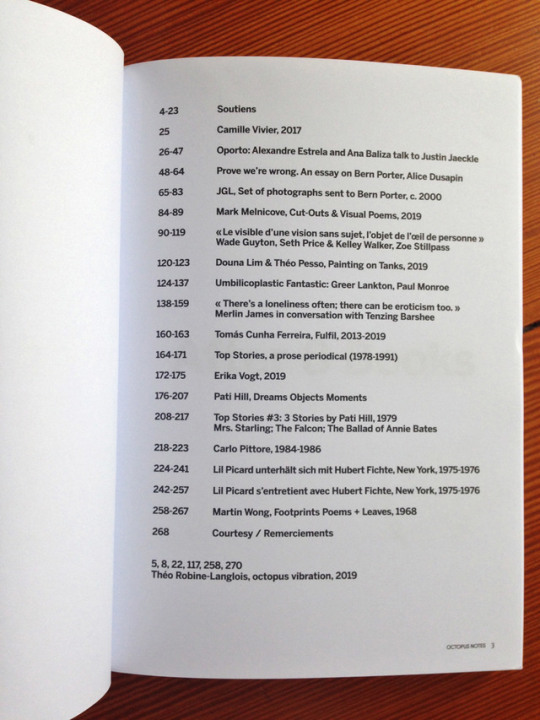

OCTOPUS NOTES 9: INTERVIEW WITH ALEXANDRE ESTRELA AND ANA BALIZA, OPORTO
On timesharing, experimental film and video, shipwrecks, artist run spaces and Lisbon, centred on, and interpreted through, the operations of Oporto – a studio and non profit space located in the headquarters of a former Merchant Sailors Union in Lisbon, which since 2007 has been sporadically ‘hosting undigestible and resistant art, having a special focus on experimental film and video’. For the ninth edition of octopus notes – a biannual journal that publishes critical essays, academic writings, interviews and artists' projects. Available to buy here.
1 note
·
View note